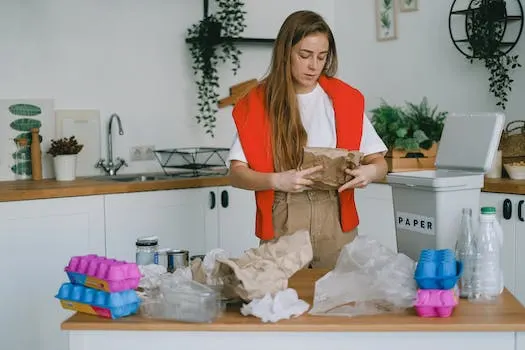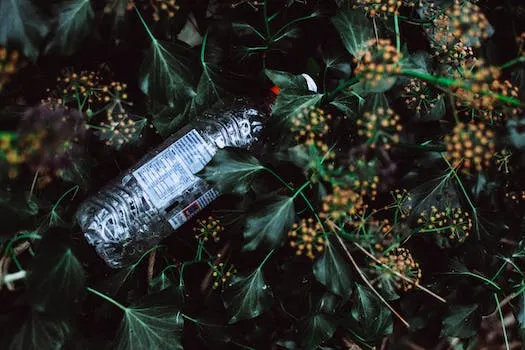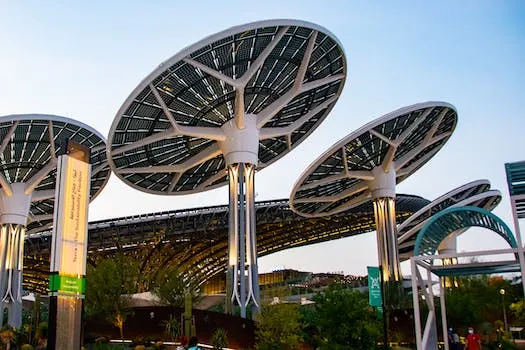
Sustainable Packaging: A Look at the Latest Innovations
As environmental awareness continues to grow, companies are increasingly looking for ways to reduce their environmental impact. sustainable packaging is one of the most effective solutions, and it is constantly evolving with new innovations being developed every day. In this blog post, we will explore some of the latest sustainable packaging innovations and how they are helping to reduce waste and environmental impact.
The pressure to reduce the environmental impact of packaging, comply with regulations, and satisfy consumer preferences has led to a wave of innovative eco-friendly packaging alternatives coming onto the market. From biodegradable plastics to materials made from recycled content such as rPET (recycled plastic), companies are finding ways to minimize their carbon footprint while still providing quality products. Amazon customers in particular want right-sized recyclable packaging that minimizes waste and ensures damage-free delivery; Amazon works hard at reinventing its own packaging in order to meet these demands.
Research into existing materials and technology has shown that it can be difficult for companies further reduce cost or environmental impact without sacrificing quality or convenience; however, there are still many opportunities for improvement when it comes to eco-friendly packaging materials. With so much emphasis on a company's commitment towards sustainability today, businesses need to consider how their product's success can be enhanced by using eco-friendly materials in their packages. By doing so they can not only help protect our planet but also gain customer loyalty through demonstrating an ethical approach towards sustainability initiatives.
Biodegradable Packaging
Biodegradable packaging is becoming increasingly popular as a sustainable packaging option. This type of packaging is designed to break down in the environment without leaving any harmful residues behind. It is usually made from renewable materials such as cornstarch, bamboo, and sugarcane, which can then be composted to reduce the amount of waste sent to landfills. The demand for bioplastics as food packaging has also increased significantly in recent years due to their environmental benefits.
Biodegradable materials are better for the environment than traditional plastics because they are manufactured from recycled materials rather than chemicals and plastics. There are several types of biodegradable material that can be used for sustainable packaging including cardboard, paper, corn starch, biodegradable packing peanuts, water soluble plastic, organic fabric, bamboo and acid-free tissue paper or kraft paper.
Compostable plastic will break down into carbon dioxide, water and inorganic compounds when placed in a compost site due to microorganisms breaking it down over time. Bioplastics that are considered “biodegradable” can also be broken down by microorganisms such as bacteria or fungi into natural elements like carbon dioxide and water without causing pollution or harm to the surrounding environment.
In conclusion, Biodegradable packaging offers an environmentally friendly alternative to traditional plastics while still providing effective protection for products during shipping and storage. With its ability to decompose naturally without causing pollution or harm to the environment it is becoming an increasingly popular choice among businesses looking for more sustainable options when it comes to their product's packaging needs.
Recyclable Packaging
Recyclable packaging is an important part of sustainable packaging. It is designed to be recycled, either through industrial or consumer-level recycling programs. This type of packaging is generally made from materials such as paper, cardboard, and plastic which can be broken down and reused to create new products. Glass and metal can be recycled indefinitely while paper can be recycled five to seven times before it's too degraded to use again. Recyclable packaging also includes biodegradable packing peanuts, corrugated bubble wrap, air pillows made from recycled content, cornstarch packaging and mushroom-based materials.
Amazon customers are increasingly looking for right-sized recyclable packaging that minimizes waste and ensures damage-free delivery. To meet this demand companies are working hard to reinvent and simplify their processes in order to reduce the amount of waste sent to landfills.
When choosing boxes, mailers or containers for your business consider using recyclable materials such as paperboard cardboard which is one of the most common types used today. Other options include plastic bags, wrap (film) sacks; food & drink containers; other garbage; household hazardous waste - all of which can be recycled in some way or another depending on the material type used in production.
Recycling 101 provides a comprehensive guide on understanding the advantages of sustainable packaging while dispelling myths about its use as well as providing tips on how best to choose the right types for your needs. By investing in recyclable materials you will not only help reduce landfill waste but also contribute towards a more eco-friendly future for generations ahead!
Compostable Packaging
Compostable packaging is a type of sustainable packaging that is designed to break down in a compost pile over a period of time. This type of packaging is made from renewable materials, such as plant-based plastics, paper, cardboard and cornstarch. It can be safely and easily decomposed in a home composting system or sent to an industrial composting facility. Compostable plastic will biodegrade in the presence of microorganisms such as bacteria, fungi and algae into carbon dioxide, water and inorganic compounds. Depending on how they're made, these materials can go into your home compost bin or into an industrial composting facility. Homeowners who are interested in using this type of packaging should research their local regulations for proper disposal methods. Additionally, it's important to note that not all biodegradable materials are necessarily compostable; some may require special disposal methods or facilities for proper decomposition.
Reusable Packaging
Reusable packaging is an important part of sustainable packaging solutions. It can be made from materials such as glass, metal, and plastic and used multiple times before being recycled or composted. This reduces the amount of waste sent to landfills and eliminates single-use plastic and its related concerns. Recyclable packaging can also be processed and reused again, with paper, glass, metals, and some types of plastic able to be recycled. Sustainable packaging also includes biodegradable or compostable materials that use fewer resources than traditional options. Whenever possible, we should choose better options like recycled or recyclable plastics – currently 53% of our packaging is recyclable! Reusable packaging helps close the loop by creating fewer waste materials that need to be disposed of in landfills or incinerators. By using reusable packages instead of single-use items we can reduce our environmental impact while still enjoying the convenience that comes with modern products.
How Companies Can Make Use of Sustainable Packaging
Businesses are increasingly turning to sustainable packaging solutions to reduce their environmental impact. One of the most popular options is biodegradable, recyclable, compostable and reusable materials. This helps to reduce the amount of waste sent to landfills and can be used in a variety of ways. For example, companies can use refillable containers or packages made from recycled materials that can be reused or recycled. Additionally, businesses can encourage customers to return or recycle their packaging which further reduces waste sent to landfills.
Another sustainable packaging option is liquid carton board and recycled plastics which have a 50 percent lower environmental impact than polystyrene-based products. Food brands often prefer cellulose-based material as it is biodegradable and compostable making it an eco-friendly alternative to plastic. Companies are also looking into increasing the use of recycled plastic (rPET) as this has a smaller carbon footprint than traditional plastics while still providing adequate protection for products during shipping and handling processes.
Businesses have access to several strategies when it comes to sustainable packaging solutions such as lab testing, machine learning, materials science research and more in order fight plastic pollution with frameworks that reduce plastic usage or provide plastic-free alternatives altogether. By implementing these strategies businesses will not only help protect the environment but also benefit from cost savings due reduced waste disposal costs associated with traditional non-sustainable packaging methods such as polystyrene foam packing peanuts which are difficult if not impossible for many companies recycle on their own due lack of infrastructure available for recycling them properly in many areas around the world today .
Conclusion
In conclusion, sustainable packaging is an important part of reducing waste and environmental impact. Companies are taking steps to reduce their environmental footprint by utilizing innovative solutions such as biodegradable, recyclable, compostable, and reusable materials. Amazon customers are looking for right-sized, recyclable packaging that minimizes waste and ensures damage-free delivery. The company is working to reinvent and simplify its packaging to reduce its environmental impact by increasing the use of recycled plastic (rPET). Packaging waste has a significant detrimental effect on the environment which must be addressed industrywide. Amazon's goal is to have 100% of its packaging free of petroleum-based plastic that is reusable, compostable or recyclable by 2025. It is also helping evolve the way packaging is designed from developing refillable or reusable systems to using simplified or recycled materials. Sustainable packaging can help create a more sustainable future for everyone if we all do our part in addressing this challenge!










